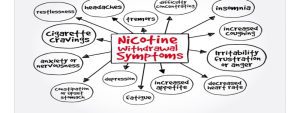Deciding to quit smoking is a significant step towards improving your health and well-being. A personalised quit-smoking plan can significantly increase your chances of success by setting clear goals, identifying triggers, and developing strategies to overcome challenges. Here’s a step-by-step guide to help you create an effective quit-smoking plan:
- Set a Quit Date:
Choose a specific date within the next two weeks to quit smoking. This gives you enough time to prepare mentally and physically while maintaining motivation. To hold yourself accountable, circle the quit date on your calendar and share it with supportive friends and family members. - Identify Your Reasons for Quitting:
Understanding your motivations for quitting smoking can strengthen your commitment. Whether improving your health, saving money, or setting a positive example for loved ones, clarify your reasons and remember them throughout your quit journey. - Understand Your Smoking Triggers:
Identify the situations, emotions, or activities that trigger your urge to smoke. Common triggers include stress, social situations, and certain times of the day. Once you recognise your triggers, brainstorm healthier alternatives or coping strategies to manage cravings effectively. - Create a Support System:
Enlist the support of friends, family, or a quit-smoking support group. Inform them about your quit-smoking plan and discuss how they can assist you during challenging times. A strong support system can provide encouragement, motivation, and practical assistance throughout your quit journey. - Consider Nicotine Replacement Therapy (NRT) or Medications:
Talk to your healthcare provider about using nicotine replacement therapies such as patches, gum, or lozenges. NRT can help reduce withdrawal symptoms and cravings, making it easier to quit smoking. Prescription medications like bupropion or varenicline may also be recommended in some cases. - Develop Coping Strategies:
Plan for how you will handle cravings and withdrawal symptoms. To manage stress, practice relaxation techniques such as deep breathing, yoga, or meditation. Keep healthy snacks on hand to satisfy oral cravings, and stay hydrated by drinking plenty of water throughout the day. - Modify Your Environment:
Remove cigarettes, lighters, and ashtrays from your home, car, and workplace. Clean and freshen your living spaces to remove the smell of smoke. Surround yourself with supportive individuals who encourage your decision to quit smoking. - Reward Yourself:
Set up milestones and reward yourself for achieving them. Treat yourself to a movie, a spa day, or a new gadget when you reach specific goals, such as staying smoke-free for a week or a month. Celebrating your progress reinforces positive behaviour and motivates you to continue your quit journey. - Prepare for Challenges and Setbacks:
Quitting smoking is a process that may involve setbacks. If you slip and smoke a cigarette, don’t be too hard on yourself. Instead, learn from the experience and use it to strengthen your commitment to quitting. Review your quit-smoking plan, adjust strategies if needed, and continue moving forward. - Stay Persistent and Patient:
Quitting smoking is a journey that requires persistence and patience. It’s normal to experience cravings, irritability, or mood swings during the initial days and weeks. Stay focused on your reasons for quitting, lean on your support system, and remind yourself that each day without smoking is a step towards a healthier, smoke-free life.
Creating a quit-smoking plan tailored to your needs and preferences increases your chances of successfully quitting smoking. By setting clear goals, identifying triggers, utilising support systems, and implementing coping strategies, you can take control of your health and embark on a path towards a smoke-free future.




